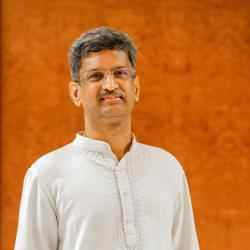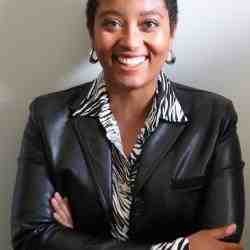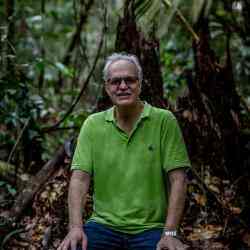Introduction
Brett is pioneering a science and design practice of ‘Oral Information Management.’ About a billion adults are illiterate or innumerate world-wide. Two-thirds of these are women. Based on published empirical research, Brett designs solutions for this ‘oral’ population to enable safe and independent use of modern financial instruments, like mobile wallets, account statements and enterprise records.
The New Idea
Numeric representations of money (such as $1,250, or ₹24,300) are the lifeblood of the modern economy. Yet approximately a billion adults can’t read or write ordinal numbers like these. Key to Brett’s new idea is a recognition that many societies are actively moving from a cash to a digital economy. Paper money was invented when most people were illiterate and has always been designed to support human access to the modern economy. Oral adults recognize paper money from relative sizes, images, and colors. As the world digitizes and cash phases out, the risk of leaving this population behind is great.
Brett is making financial inclusion possible for illiterate and innumerate (‘oral’) adults by creating transaction records that everyone – including illiterate and innumerate (‘oral’) people – can use safely, conveniently and independently. Based on years of field work in the 1990s and early 2000s in Asia, Africa and the Pacific, Brett developed new Oral Information Management (OIM) tools like digital images of cash notes, oral iconography, and oral metaphors for space and time. These OIM tools are integrated into digital wallet applications, savings passbooks, micro-enterprise records and other financial transaction records. Brett’s solutions rework user interfaces so that illiterate and innumerate adults find the tools empowering and are able to learn at their own speed through repetitive use. It is well known that precise word-to-word translations are impossible without text. But he observed that it is entirely possible to intelligibly convey information about financial transactions that is vital to oral users, either in a form that they already understand, or in one that they can readily acquire. Brett’s tools enable oral communities to engage in practical skills, like understanding three-digit numbers, reading the payment transfers on their mobile phones, the loan balance from the money lender, planning for the future and knowing if their savings group record matches the money that they invest.
To accelerate access and distribution of these tools, Brett is building an open-source repository of OIM tools and solutions while advocating in the financial inclusion sector for practitioners to be more aware of this issue. Brett has also developed a new Financial Numeracy Indicator (FNI) that has been successfully tested in large, nationally randomized surveys in Côte d’Ivoire and Myanmar. His goal is to have this global indicator of financial numeracy mainstreamed into the movement for financial inclusion and the next round of the global development goals. By delivering OIM designs through existing financial services providers world-wide, Brett’s goal is to see 100 million illiterate and innumerate adults acquire the financial numeracy and record-keeping skills required for financial inclusion by 2030. He envisions a world in which everyone can safely, conveniently and independently use banks, ATMs, digital finance, and account records.
The Problem
In developing economies where extreme poverty is common, the endless struggle for subsistence prevents people from learning and often going to school, which then limits economic possibilities. However, some encounters with modern finance are unavoidable, and when poorly schooled adults are obliged to conduct transactions, they experience extremely high stress. This is caused partly by the struggle to process large amounts of important information, much of which is usually learned at school, under time pressure. This stress is also caused by retail contexts that are not designed with the needs of this population in mind and based on financial numeracy pre-requisites. ‘Financial numeracy’ can be defined as the numeracy skills required to carry out basic financial transactions with understanding, in real-time and without the help of a third person. Without these skills, autonomous financial transactions are impossible. This limitation perpetuates extreme poverty.
There are three types of numeracy: verbal (say ‘three’), object-based (see three people) and literate (write ‘3’). Each code is different, and oral culture is skilled at the first two, but not the last. Many can read and even write one-digit numbers but can’t decode longer strings of numbers (e.g. 420 or 5,250). For centuries, oral adults have adapted to modernization by using cash as an intermediate numeric system between the verbal and written numeracy systems (identifying the value of banknotes for example, by color, images and relative size). But subsistence farmers rarely encounter large numbers except in the context of cash, and nations with the largest illiterate populations often have low-value currencies, that require two, three or even five digits to make up one $US dollar. As cash phases out, this is placing enormous stress on human adaptation.
Financial inclusion experts often state that poor people have good numeracy skills. While this is often true of calculation, it is not true of written numbers, which are ubiquitous on transaction slips and account statements. Oral adults hide innumeracy because it makes them vulnerable to financial exploitation. Because literate ways of knowing have become the norm and globally rule the financial system, it is very hard for literate people to even comprehend that one billion adults in the world are not able to understand written numbers. As a result, financial practitioners have struggled to comprehend the scale of the financial numeracy barrier and have failed to address it. Despite the economic salience of innumeracy, progress on overcoming it is not globally measured or tracked (unlike illiteracy). The results of the recently tested Financial Numeracy Indicator lend strong support to his hypothesis that there is an enormous unbanked population who cannot read numbers equal to US $100 in their national currencies. This effectively excludes them from safely investing or saving for the future in money.
Moreover, at the beginning of the 19th century, people did not need to be literate to make a living. Today it is a different story with the digitization of the economy requiring basic literacy and numeracy skills. In 2017, two-thirds of unbanked adults had a mobile phone. The mobile money revolution, beginning in Kenya in 2007, has been based on the assumption that if a person is able to use a phone and copy down a phone number (a cardinal number-string), they can confidently and accurately write a 4-digit cash amount (an ordinal number string). Furthermore, it was widely considered impossible to design an interface that illiterate adults could use more effectively than those designed for literate people. However, these views are now changing. In countries with very low levels of literacy like Bangladesh or Pakistan where mobile phone penetration is high, widespread inability to navigate mobile money interfaces has resulted in the emergence of an ‘over-the-counter’ market where the mobile phone owner (most of the time illiterate and innumerate) gives their phone and PIN to an agent and pays them a fee to enter the transaction for them which considerably limits their autonomy. In Pakistan, 90% of mobile money transactions happen over-the-counter and most of them are in-and-out flows (meaning that money does not sit on the account, it just transits) which is a great source of frustration for digital financial services.
In addition, experts in financial inclusion are relying on the development of Artificial Intelligence and ‘natural language processing’ (like Siri or Alexa) to provide voice-based mobile tools for illiterate and innumerate people. There are significant hardware, privacy, language and other technical concerns with NLP. Indeed, it works well with languages likes English or Chinese which are spoken by a large proportion of the worldwide population but is not functional for long-tail languages which a majority of oral people speak. There are for example 40 different languages in Tanzania for 60 million people, making it impossible to reach the same level of service for everyone using voice-based digital tools. On top of these technical concerns, voice alone cannot build the skills in written ‘financial numeracy’ that are already a pre-requisite for living a life beyond poverty.
The Strategy
After working in microfinance during the 1990s and early 2000s, Brett spent five years listening to oral villagers in Asia, Africa and the Pacific, and studied financial numeracy in their communities to understand the root causes of their financial exclusion. This is where he identified the capabilities gap between illiterate & innumerate adults and literate & numerate adults. Over the years, Brett developed an extensive database through field studies in Myanmar and Côte d’Ivoire on financial numeracy. This allowed him to create the first-of-its-kind Financial Numeracy Indicator (FNI), which pinpoints specific gaps in financial numeracy that encourage potential solutions to be tested.
In 2012, Brett had enough clarity on the problem so he could start driving solutions and created a non-for-profit corporation called My Oral Village (MOVE) to build the capabilities to introduce and then globally replicate OIM as a financial inclusion solution for illiterate and innumerate adults. These OIM tools act like cognitive bridges allowing illiterate and innumerate adults to use Digital Financial Services (DFS) autonomously, safely and in real-time. These tools serve as a learning space for oral users to learn financial numeracy skills without risking financial loss. In partnership with the University of Waterloo, Brett has designed and piloted new interfaces such as cash-based scrollbars in Timor Leste and Tanzania and has successfully proved usability showing skill development for users.
By the end of 2020, Brett is striving to have two active programs underway. On one hand, Brett is demonstrating to commercial mobile wallet suppliers such as telecoms companies, banks and remittance firms that OIM can be adopted profitably, with limited risk, and in a manner that expands their markets. To facilitate commercial adoption of mobile OIM, Brett has designed a ‘minimum viable product’. Brett’s goal with this product is to create a viable private market for oralized designs, channeled through suppliers like telecoms companies, banks and remittance companies. He is currently working with Hover, a Seattle-based fintech, to build an app from the designs. Market-launch is planned for late 2019 in Pakistan in collaboration with Aqeel Hayat, a local OIM pioneer. The Pakistan market is one of the most ready in the world, and the Central Bank has signaled to Brett its openness to this type of innovation. With proof of commercial potential ready, MOVE plans to form a consultancy-based revenue generating subsidiary called Orali that will act as the ‘Red Hat’ of OIM designs while reinjecting revenues back into MOVE. To house the OIM designs and accelerate their adoption, Brett is launching an open-source repository analogous to Wikipedia Commons called World Oral Wiki. Organized by transaction purpose and geographical/cultural context, the wiki will be available to any individual or organization that wishes to develop its own OIM solutions to enhance its communication with the oral population segment. Orali will act as the ‘Red Hat’ of OIM designs, providing targeted consulting to implement OIM designs while setting a global standard for design quality and service.
On the other hand, Brett is targeting the Microfinance sector to distribute his designs. He intends to reach thousands of extremely poor households enrolled in charitable programs that ‘graduate’ women from extreme poverty, thus demonstrating to similar programs world-wide that OIM improves the sustainability of their impact, even after they stop providing support. He is already building relationships with the Bangladesh Rehabilitation Assistance Committee’s (BRAC) proven Graduation programs methodology to increase food security and value asset/ownership. Graduation programs are typically a 24-month multifaceted approach which sequences training in safety nets, livelihoods and microfinance. It has shown to be very effective. However, many graduates from such programs still fall back into ultra-poverty within a few years because they lack the numeracy and record-keeping skills necessary to sustain and grow their efforts. Brett and his team are working with BOMA, an NGO that runs a program in northern Kenya that graduates households from extreme poverty. This population, like most of the extremely poor, do not own smartphones, and often have no phone at all. While this rules out commercial solutions, MOVE will build on BOMA’s graduation system by designing paper-based record-keeping systems for use by entrepreneurs and savings groups. Illiterate entrepreneurs are often held back in the growth of their businesses due to inability to keep reliable records of stock, customer debt, and the profitability of different types of transactions.
Through these and other initiatives, Brett plans to reach at least 100,000 illiterate and semi-literate adults with OIM designs by 2022.To address this view, Brett has worked with local partners to design, test and implement tools and solutions in Cambodia, Bangladesh, India, Timor-Leste, the Solomon Islands and Tanzania. Processes for generating high-quality OIM designs at the lowest possible cost have also been tested and refined. Determined to ensure that OIM is and always will be a public good, Brett has published numerous open-source blogs and technical papers on both the practice and the science. Brett is also striving to catalyze a flourishing science of OIM, fueled by recent or ongoing collaborations with the University of Western Ontario, the University of Waterloo, the University of Toronto, Centennial College and Alliance University. With solid background research in place on oral financial numeracy under the guidance of Dr. Daniel Ansari at Western, the scientific work is currently moving into spatial numeracy and the oral dimensions of human-computer interaction. Brett aims to integrate OIM into university curricula in studies of cognitive psychology, behavioral finance and international development to ensure a continuing flow of practicing graduates in future.
Brett is also fiercely advocating across different levels of the financial inclusion community to shed light on this completely overlooked problem and is slowly shifting mindsets in the industry. The financial inclusion industry is starting to agree that it is both useful and possible to change retail interface designs in a way that empowers illiterate and innumerate adults and in ways that they will use. This is considerable given that only ten years ago, it was not considered possible to design an interface that illiterate adults could use more effectively than conventional models which do not integrate OIM designs. A key element is the development of global metrics, and with the success of the Financial Numeracy Indicator, discussions have opened with the World Bank’s Global Findex. This triennial survey is the benchmark for progress in financial inclusion in over 140 countries. While building the science, Brett is strategically engaging partners in the Global Findex to identify and measure barriers to financial inclusion resulting from inadequate formal education. Brett thinks that tracking this data globally and systematically would allow governments, financial systems and whole economies to introduce simple changes in interface design that would vastly improve oral understanding similar to the impact of braille for blind people.
In the long-term, Brett aims to work with multilateral institutions and governments to (1) promote the use of cash scrollbars in digital financial applications and ATMs with central banks, (2) target universal financial numeracy as a national policy with ministries of education, (3) measure basic financial numeracy levels of national populations with central banks, and (4) influence policy regarding consumer protection to oblige institutions to present information to oral adults in a way they can understand and use.
As of 2019, OIM designs are reaching over 5,000 people, most of whom are in the Solomon Islands due to a partnership with the UNCDF. Brett has also created a prototype OIM design for a Mobile Wallet (MoWo) for MicroSave (now MSC). MSC is now profiling this as a “signature project” and states on its website that the “MoWo product now informs the design of applications for several digital finance providers and Fintechs in India.” Since it has been published mid-2017, the MoWo has been downloaded over 10,000 times. Brett has tested his OIM designs (Mobile Wallet, Cash Calculator, Cash-based Scroll Bar, Savings group passbooks) with illiterate and innumerate adults in Tanzania and Cambodia. In each case, users could perform core functions of the application without human support. MOVE’s February 2019 impact report highlights that most respondents could recognize savings icons and 41% could find their personal savings in the ledger book. It also shows that people with little to no schooling are able to use Brett’s designs with very little guidance prior to using them.
The Person
Brett grew up in St. Catharines, Ontario, where both his parents were teachers. When he turned eight, he watched the Nigerian Civil War on TV and was shocked by the images of starving children he saw. On the same device, he also watched Neil Armstrong step onto the moon and celebrated when the US proclaimed: “One small step for man, one giant leap for mankind.” He was deeply troubled that these two contrasting realities could co-exist within one human species. This memory marked the early days when he decided to commit his life to changemaking. Brett has always looked for ways to be genuinely useful by finding neglected problems and trying to solve them. In 1985 he led a disinvestment campaign at Brock University from companies tied to the Apartheid. After winning the support of a journalist at the St. Catharines Standard the Board of Governors passed a motion to withdraw. In the 1990s, Brett founded the Ethical Pathways Investment Club (EPIC), one of the first investment clubs in Toronto with explicitly ethical stock-picking criteria.
Brett states that much of his career has involved fighting assumptions about poor people: “poor people don’t save,” “poor people are happy to let their children read their financial information for them,” “poor people can easily send money if they can dial a phone number,” “poor people are trapped in cash economy.” Brett aims to debunk unjustified assumptions to get at the real root of poverty. Brett’s unique skill is that he is a cross-cultural facilitator, who translates literate ways of doing and knowing to oral people so that they can adapt to our modern economy on their own terms.
After having worked eight years for Unicoll Credit Union in Toronto and two years for Oxfam America, Brett began investing more time in the early 2000s to learn about oral villagers, their life experiences, livelihoods, and their struggles. He spent many years living and working in oral communities across Asia, Africa and the Pacific. This way he learned about the financial lives and aspirations of this population, and the basics of the science and design practice of Oral Information Management began to take shape. In 2011, Brett created My Oral Village as the vehicle to shed light on this neglected problem and to develop bridge solutions for oral people to transition into the today’s economy.




